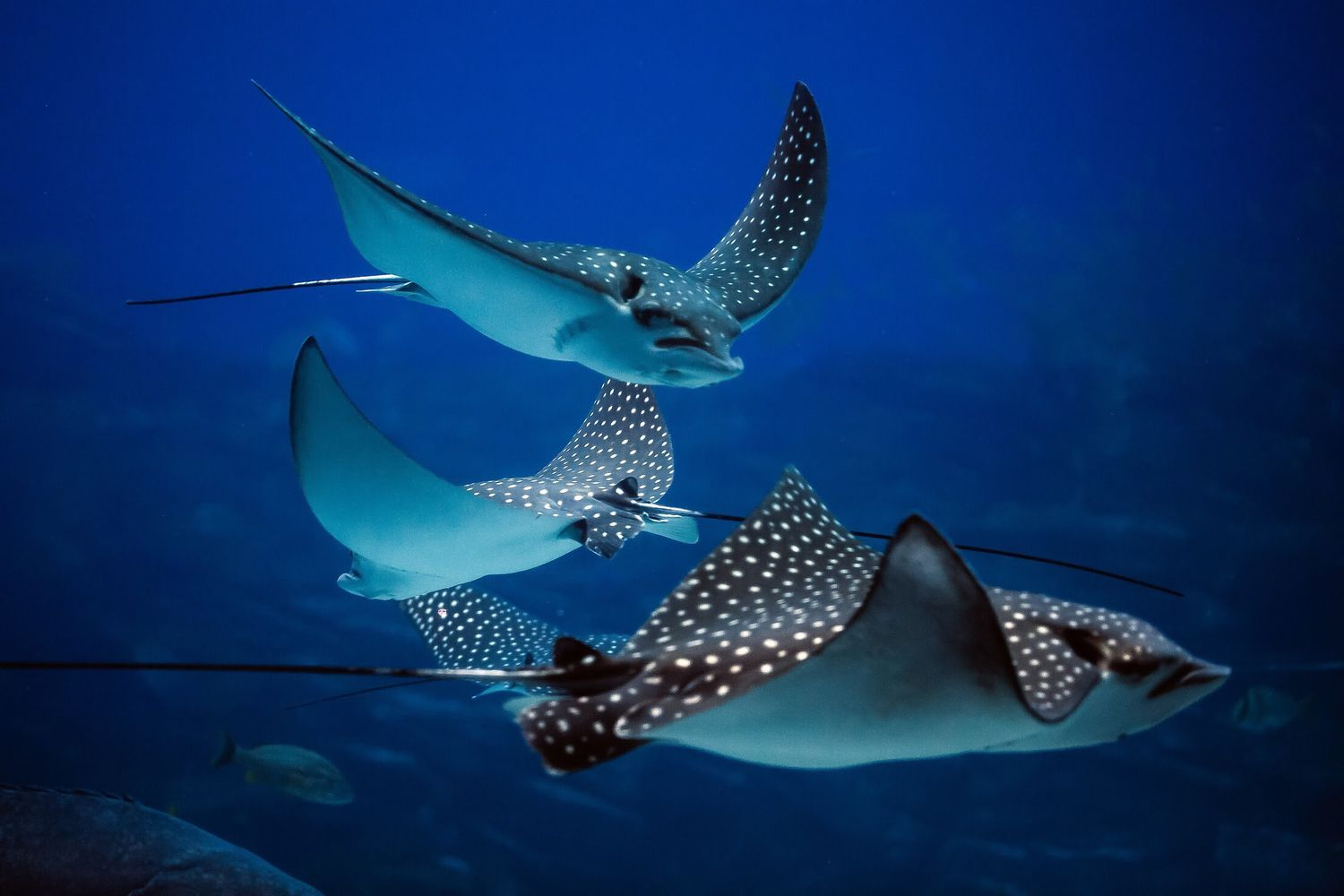In the vast ocean depths, an enchanting creature gracefully glides through the water with elegance and a hint of playfulness—the stingray. With their unique appearance and mesmerizing movements, stingrays have captivated the hearts of marine enthusiasts and curious observers alike.
Stingrays are elasmobranchs and belong to the same family as sharks and skates. They are flat-bodied creatures with distinctive diamond-shaped bodies and long, whip-like tails armed with venomous spines. These enigmatic beings are renowned for their agility and acrobatic displays as they glide effortlessly through the ocean currents.
One of the most intriguing aspects of stingrays is their playful behavior. These graceful creatures often engage in mesmerizing dances and playful flips, seemingly expressing their joy and exuberance. Watching stingrays perform their underwater ballet is a true delight, as they twist, twirl, and gracefully soar through the water. Their playful nature not only brings joy to observers but also serves important purposes in their daily lives.
Stingrays use their playful behavior as a form of communication and social interaction. It helps establish hierarchies within their groups and strengthens social bonds. Playful interactions also serve as a way for stingrays to learn and practice essential skills, such as hunting techniques and evasive maneuvers. Through their playful nature, stingrays exhibit intelligence, adaptability, and a zest for life in their underwater realm.
While stingrays bring joy and wonder to our lives, their conservation status is a matter of concern. Like many marine species, stingrays face significant threats due to human activities and environmental factors. Overfishing, habitat destruction, pollution, and climate change pose significant challenges to the survival of these magnificent creatures.
One of the key threats to stingrays is the demand for their gill plates, which are highly valued in traditional medicine and for their perceived medicinal properties. Unregulated fishing practices and the illegal wildlife trade contribute to the decline of stingray populations worldwide. Additionally, habitat destruction, such as coral reef degradation and coastal development, disrupts their natural habitats and reduces their food sources.
To safeguard stingrays and the delicate marine ecosystems they inhabit, conservation efforts are crucial. Organizations and researchers around the world are actively working to protect and conserve stingrays through various initiatives. These efforts include implementing sustainable fishing practices, establishing marine protected areas, and promoting education and awareness about the importance of preserving marine life.
Ecotourism also plays a vital role in stingray conservation. Responsible tourism practices allow visitors to witness the beauty of stingrays in their natural habitats while supporting local communities and raising funds for conservation projects. Stingray encounters, under the guidance of trained professionals, offer an opportunity for people to appreciate these magnificent creatures up close and learn about their significance in marine ecosystems.
